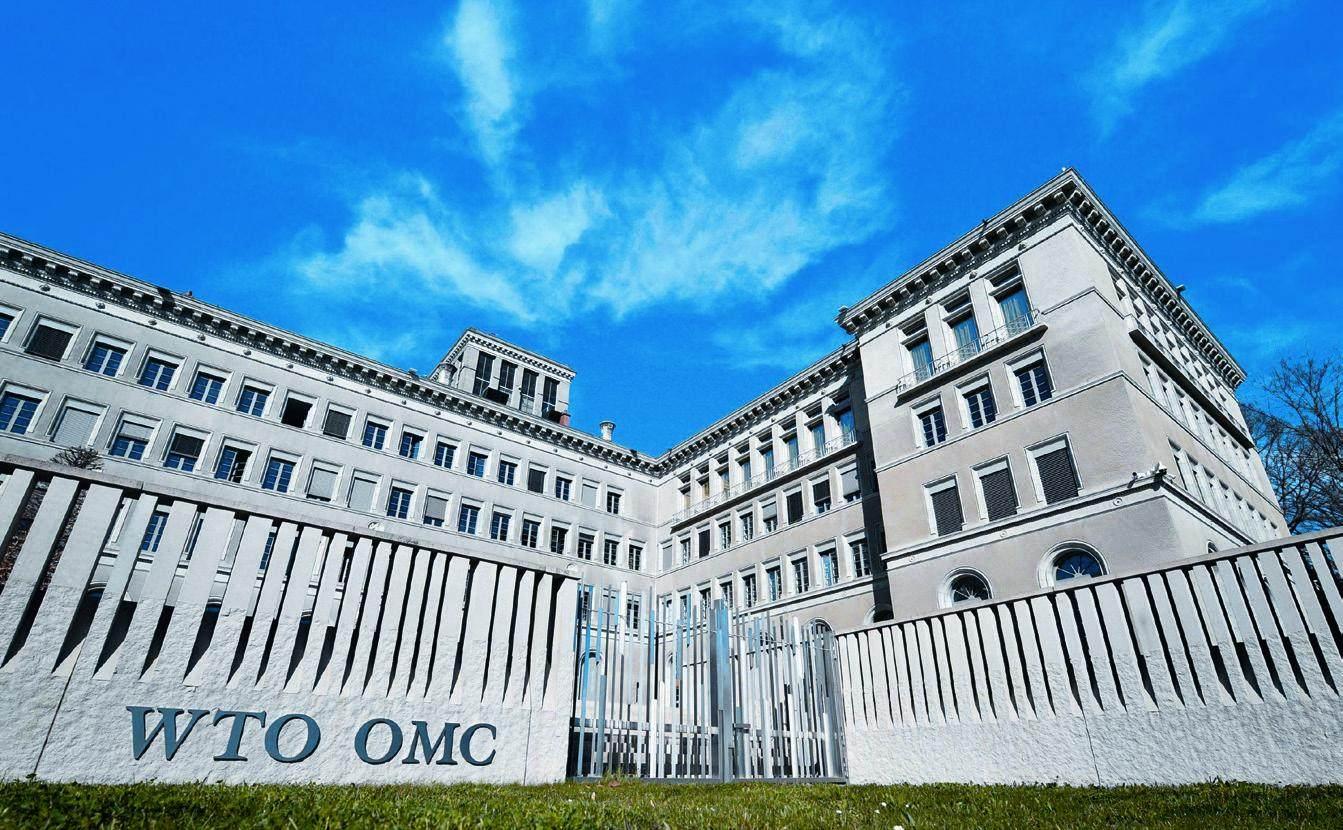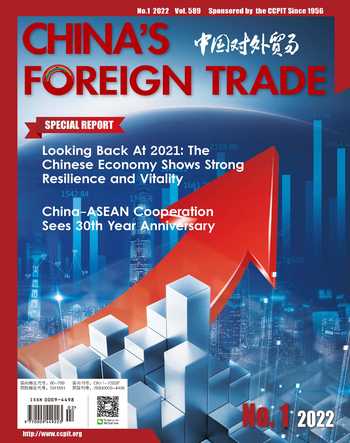Twenty Years of China in the WTO:A Win Win Outcome for Both China and the World
By Lily Wang
The year 2021 marks the 20th anniversary of China’s accession to the WTO. In the past 20 years, China has been implementing its commitments by opening up its door wider and wider to the outside world. Thanks to its stable development, China has become the driver and stabilizer to the world’s economic growth.
China contributes an average of 30% to world economic growth
At “Facing the future and build an open-up world economy”, an event held by the CCPIT recently to celebrate the 20th anniversary of China’s accession to the WTO, CCPIT Chairperson Gao Yan said that since 2002, China’s average contribution rate to the world economic growth has been close to 30%. As a major trading partner of more than 120 countries and regions, China has become a major stabilizer and driver for the sustainable development of the world economy. China’s Belt and Road Initiative has become the most popular public goods and the best platform for international cooperation in the world. As of 2020, China’s trade volume with the countries along the Belt and Road region had exceeded USD 9.2 trillion and the outbound investment in these countries had reached about USD 140 billion.
Long Guoqiang, Deputy Director of Development Research Center of the State Council, said that China’s accession to WTO is a big event in the process of China’s modernization, which has changed the relationship between China and the world. After China became member of the WTO, China has greatly improved its status and influence in the global economic system by giving full play to its com- parative advantages and deeply engaging in the global division of labor. Also, joining the WTO is a profound ideological emancipation movement for China, which has firmly upheld the concept of opening up to the outside world and expanded the scale of opening-up continuously.
At present, the world is undergoing great changes and a pandemic larger than one seen in a century. Unilateralism and protectionism are on the rise, and economic globalization is facing a setback. The WTO is experiencing the most difficult time since its foundation.
Li Chenggang, Chinese Ambassador to the WTO, pointed out that rule negotiation, dispute settlement and trade policy supervision are three pillars of the WTO, but now two of the three pillars have faced big problems. Rule negotiation has been stagnant for a long time, and there are little outcomes of negotiation in the past 20 years. The appellate body has been paralyzed, and the function of trade policy supervision has become a mere formality. The effectiveness and authority of the multilateral trading system have been severely challenged.
Despite problems, Li said that the WTO still plays an unshakable fundamental role in maintaining the stability of world economy and free trade. As the international situation becomes increasingly complex and changeable, an effective and rule-based multilateral trading system meets China’s interests and is very important to maintain the stability, prosperity and development of all countries in the world. This is also an important reason why China should actively promote the WTO reform and safeguard its stability, authority and effectiveness.

“History has fully proved that China’s choice of joining the WTO is correct, and we have no reason to give up the right path that has been proved by practice,” Zhang Xiangchen, Deputy Director General of WTO, pointed out in his video speech. He also said that 20 years after China’s accession to the WTO, China has completed the transformation of its identity from a rule learner to a rule maker. Standing at a new starting point, China should firmly maintain its position as the main channel for the formulation of international rules of the multilateral trade system, open up its door wider to the world, and continue to write a new chapter of win-win situation for both China and the world.
After joining the WTO, China’s economy started to soar. In 2020 China’s GDP accounted for 17% of the world, while in 2001 the percentage was only 4%.
Gao Yan pointed out that from 2001 to 2020, China’s total economic output rose from the sixth to the second in the world ranking, its trade in goods rose from the sixth to the first in the world ranking, and its trade in services rose from the eleventh to the second in the world ranking. China’s utilization of foreign capital ranked first among developing countries, and its outbound investment rose from the twenty-sixth to the first in the world ranking, greatly catching up with the times.
Data show that in 2001, China’s export accounted for only 3.8% of the world, and such proportion rose to 15.8% in 2020, ranking first in the world. In 2001, the scale of foreign capital utilization by China was only USD 46.8 billion, and it increased to USD 144.3 billion in 2020. The outbound investment increased from USD 6.9 in 2001 to USD 157.3 billion in 2020.
Gao Yan pointed out that after China’s accession to the WTO, both Chinese government and enterprises have been learning, familiarizing with and applying international rules through the participation into international organizations and multi-lateral platforms. It has transformed from a bystander and follower to the participant and builder in terms of the formulation of international economic and trade rules.
Six-fold increase of China’s import in the past 20 years
Regarding the role played by China in the past 20 years since its accession to the WTO, Yi Xiaozhun, former Deputy Director General of the WTO, said: “I think China is the biggest beneficiary of the multilateral trading system in the 20 years since China’s accession to the WTO, as many people in the world also say that China has benefited the most. But at the same time, China is also the most important contributor to the multilateral trading system.”
By referring to the WTO data, Yi explained that over the past 20 years, the total volume of world trade in goods has nearly doubled, and China’s exports of goods have increased more than seven times. But at the same time, China’s total imports also increased by nearly six times. “This is our contribution to the world. China’s import has accounted for 12% of the world’s total import of trade in goods in 2020, which is an amazing figure.”
In terms of trade in services, the proportion of China’s service exports in the world increased from 3% in 2005 to 6% in 2020, which is also doubled. The growth of service import is higher, from 3.3% in 2005 to 8% in 2020. “I think this is China’s great contribution to the world economy, but when the world discusses China’s accession to the WTO, it is often amazed at the growth of China’s exports after China’s accession and ignores the growth of imports,” Yi said.
The condition seems more clear when looking at the bilateral trade between China and its major trade partners. According to Yi, in 2001 China was only the 11th export destination of the U.S. China’s import from the U.S. accounts for less than 2% of the U.S. export. By 2020, the U.S. export to China accounts for 9% of the U.S. total export. China has become the third-largest export destination of the U.S.
From the perspective of some emerging economies, the proportion of imports from China in South Africa’s total import jumped from 1.7% 20 years ago to 11% this year. China contributes nearly 32% of Brazil’s exports. China is one of a few developing countries in the WTO that has promised zero tariff treatment for 97% exports of the least developed countries. Since 2008, China has been the main export destination of the least developed countries, absorbing 25% of the exports from the least developed countries.
Yi said that China has made excellent achievements in promoting a free trade system and complying with the WTO’s multi-lateral rules. For example, in terms of opening up the trade in services, on the basis of its commitments for joining the WTO, China has launched a series of key opening-up measures in the fields of finance, insurance, legal services and distribution, which have been widely recognized by WTO members.
“That’s why I think China should have confidence in its performance in the past 20 years since its accession to the WTO. However, as a rapidly developing large country, the world’s second largest economy and the largest trading country, we can’t be complacent about the achievements made in the past 20 years. The reform and opening-up is a long-lasting process, and we cannot stop,” Yi said.
What role shall China play in WTO reform? According to Li Chenggang, a long time ago China had systematically considered the WTO reform, and worked with the EU to establish a vice ministerial joint working group in July 2018. China is willing to cooperate with other member countries to explore the ways to better integrate the outcome of joint statement initiative into the WTO framework and improve the negotiation functions of the WTO. China will also constructively engage into discussions and negotiations about industry subsidy, and state-owned enterprises to further improve the multilateral trade system and better cater to overall interests of the 164 member countries.
“We should be both ambitious and patient with WTO reform. WTO reform involves a wide range of parties and interests; it is a systematic and complicated piece of work and cannot be achieved overnight. We should grasp the direction and balance the interests involved in the WTO reform. We cannot overload it,” said Li.
- China’s foreign Trade的其它文章
- Looking Back At 2021:The Chinese Economy Shows Strong Resilience and Vitality
- CCPIT Work Meeting 2021 Is Held Virtually in Beijing
- Joint Effort to Resolve Disputes in Intellectual Property Rights
- Six Industry Opportunities As A Result of Population Change
- Demands for Coal-fired Power Will Reach New High
- IDC’s Top 10 Predictions on China’s ICT Market In 2022

